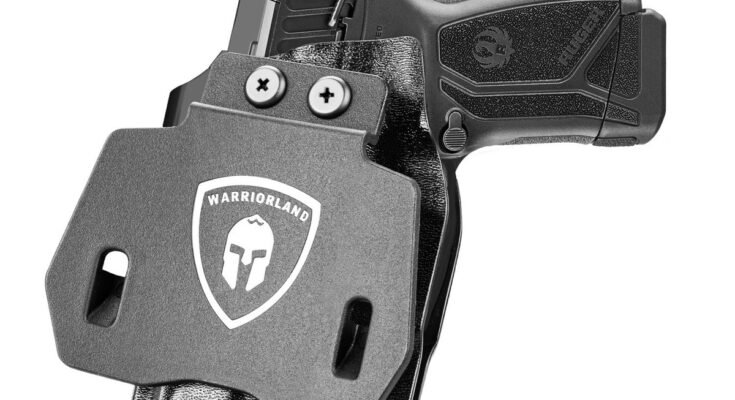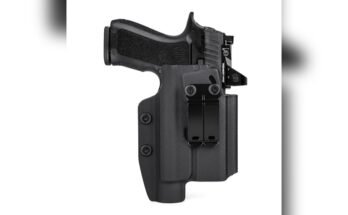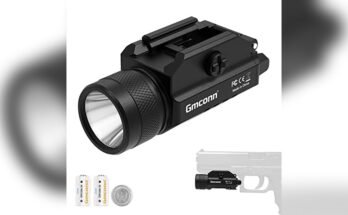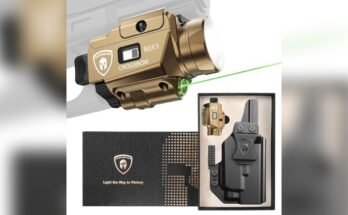I’ve built and tested Kydex holsters for years, both on the range and in everyday carry. Here’s the straight answer you’re looking for: yes, most Kydex holsters are gun-specific. They are molded to a precise firearm model for secure retention, reliable draw, and safe reholstering. That said, there are smart exceptions and ways to choose what fits your needs. In this guide, I’ll break down how fit works, when cross-compatibility makes sense, and how to pick the right setup with confidence.

What “Gun-Specific” Really Means
- Kydex holsters are thermoformed. Makers heat Kydex and press it around a replica or real firearm mold.
- The result captures tiny details: slide width, trigger guard shape, rail cuts, ejection port, and even sight height.
- This is why a holster that fits a Glock 19 won’t always fit a similar compact from another brand, even if the sizes look close.
From my bench time, I’ve seen two pistols that look identical fail a test fit because the trigger guard radius or rail notch was off by a few millimeters. That tiny shift can affect retention and safety.
When makers list a holster as “Glock 19/23/32,” that’s because those models share near-identical external dimensions. Still, accessories and generation changes can break a previously “shared” fit.

How Kydex Fit And Retention Actually Work
- Retention comes from friction and geometry. Most designs lock around the trigger guard or the ejection port.
- Tension screws let you fine-tune the “click.” Too tight makes draws hard; too loose compromises security.
- Muzzle length, slide cuts, and rail contours guide the gun into the holster and keep it stable.
On the range, I’ve tuned dozens of tension screws with blue thread locker. My rule: the gun should “click” in and not shake loose when you flip the holster upside down, but it should still draw with a firm, straight pull.

Benefits Of Gun-Specific Kydex Holsters
- Safety: Proper trigger guard coverage and consistent indexing reduce risk during reholstering.
- Consistency: Same draw angle, same feel, every time. That builds reliable muscle memory.
- Accessory clearance: Cuts for optics, suppressor-height sights, and lights keep your setup snag-free.
- Reliability: Less wobble, less rattle, fewer surprises when you move, sit, or run.
I learned early that “almost fits” often means “almost safe.” A holster that’s 90% right can pinch a mag release or drag your front sight. Both are avoidable with a model-specific mold.

When A “One-Size” Or Cross-Compatible Holster Works
Some Kydex designs are semi-universal. They may fit a “family” of pistols or use wings and spacers to accommodate shape differences. This can work if you understand the trade-offs.
- Same frame family: A holster built for a Glock 19 often accepts a Glock 23 or 32 due to shared frames.
- No-light vs. light-bearing: Light-bearing holsters often key retention off the weapon light body, not the gun. If two pistols run the same light and similar footprints, they may share one holster.
- Range-only or storage: Semi-universal holsters can be fine for non-defensive use where maximum retention and concealment are less critical.
Watch-outs from the field: semi-universal holsters may ride looser, shift your draw stroke, or miss small safety details like full trigger coverage with certain models. Always verify coverage and retention with your exact firearm and any attachments.
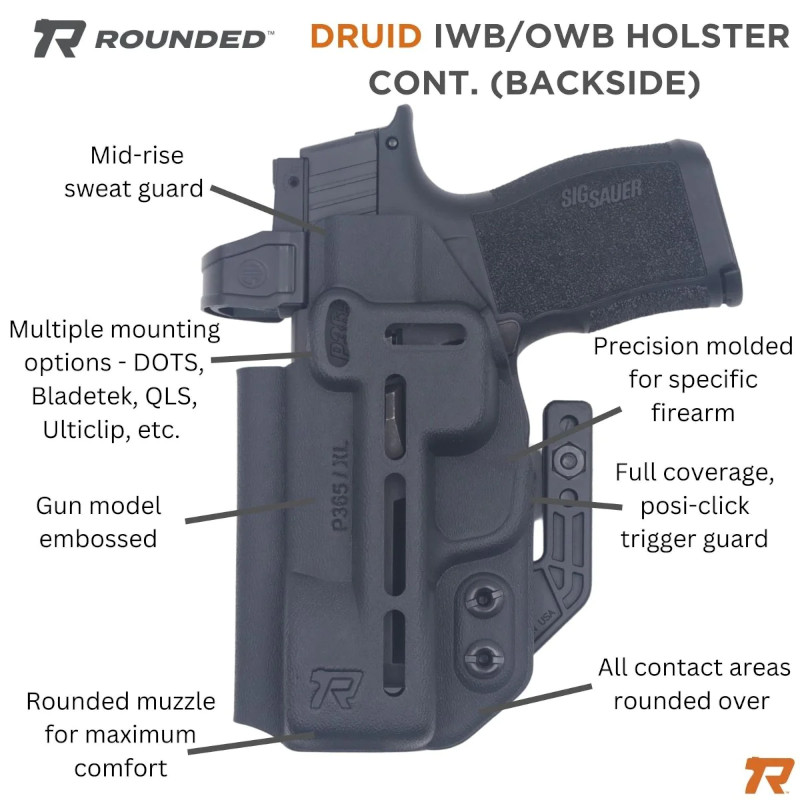
What About Optics, Lights, And Threaded Barrels?
Modern Kydex has kept up with modern pistols, but the details matter.
- Red-dot optics: Look for an optics cut. Some holsters accept most RMSc/RMR footprints; some don’t.
- Tall sights: You need a sight channel tall enough to avoid drag and peening.
- Compensators and threaded barrels: You may need an open-bottom holster or a longer shell.
- Weapon lights/lasers: Fit is often specific to both the gun and the exact light model.
I once tried to jam a TLR-7-equipped compact into a holster cut for a different micro light. It seated halfway and felt “okay,” but the retention point was on the bezel, not the light body—bad news. Always match gun plus accessory.
How To Choose The Right Kydex Holster
- Define the job: Concealed carry, duty, range, or competition all need different ride heights and retention levels.
- Confirm exact model: Include generation, frame size, and caliber if shared frames exist.
- List your attachments: Optic, sight height, weapon light model, comp, threaded barrel.
- Check maker fit charts: Look for explicit compatibility, not “should fit.”
- Test retention: Adjust tension screws. Perform passive retention checks and safe draw cycles.
- Verify concealment: For IWB or AIWB, check ride height and cant. Squat and sit to test pinch points.
- Audit safety: Full trigger guard coverage. No accidental mag drops. No slide drag that blocks cycling.
Pro tip: buy from makers who offer fit guarantees or easy returns. Even with careful specs, tolerances vary across guns, optics plates, and aftermarket parts.
Care, Maintenance, And Small Adjustments
- Clean often: Wipe grit and lint from inside the shell. Grit grinds finish and adds draw friction.
- Check hardware: Retighten belt clips and tension screws with thread locker as needed.
- Heat with caution: Gentle heat can relax a tight spot, but too much can warp the shell. If unsure, ask the maker.
- Replace worn parts: Rubber spacers, clips, and screws are cheap. Swap them at the first sign of fatigue.
I keep a small “holster kit” in my range bag: screwdriver, spare screws, spacers, and a microfiber cloth. That kit has saved more training days than I can count.
Common Myths About Kydex And Fit
- “Any compact fits any compact.” False. Micro differences in trigger guards and slides matter.
- “Tension screws fix everything.” They help, but they can’t overcome a poor mold match.
- “Light-bearing holsters fit all lights.” Retention points vary by light body. Match the exact model.
- “Optics always clear.” Only if the holster has the right optics cut and sight channel.
Reality check: a Kydex holster is a precision shell. Treat it like a fitted part, not a generic pouch.
Frequently Asked Questions Of Are Kydex Holsters Gun-Specific?
Are Kydex Holsters Truly Gun-Specific?
Yes, most are. They’re molded to the exact shape of a firearm model to ensure proper retention, safety, and a smooth draw. Some families share fit, but it’s not guaranteed.
Can One Kydex Holster Fit Multiple Guns?
Sometimes. Guns that share frames or external dimensions may cross-fit. Light-bearing holsters can also share fit if the same light model is used. Always verify retention and trigger coverage.
Do Optics And Tall Sights Affect Fit?
Yes. You need an optics cut and a tall sight channel. Without them, the optic can hit the holster body and the sights can drag.
Will A Comp Or Threaded Barrel Work In Any Kydex Holster?
Not always. Look for open-bottom designs or a longer shell. Otherwise, the barrel or comp may bottom out or bind.
How Tight Should Retention Be?
Tight enough to hold the gun during daily movement, but loose enough to allow a clean, straight draw. Adjust tension screws and test with safe, controlled draw cycles.
Is Leather More Forgiving Than Kydex?
Leather can flex and “break in,” but it can also soften over time. Kydex keeps its shape, which improves consistency but demands a precise fit.
Are Universal Kydex Holsters Safe For Carry?
They can be, if they fully cover the trigger and hold the gun securely. Still, a model-specific holster is usually safer and more consistent for daily carry.
Wrap-Up And Next Steps
Most Kydex holsters are gun-specific for good reasons: safety, retention, and repeatable performance. Cross-compatibility exists, but it’s the exception, not the rule. Match your exact gun and attachments, verify the fit, and keep your holster clean and tuned. Do that, and your draw will feel the same every time, day after day.
Take the next step: list your gun model, gen, and accessories, then check a trusted maker’s fit chart. If you found this helpful, subscribe for more gear deep-dives or leave a comment with your setup and questions.
